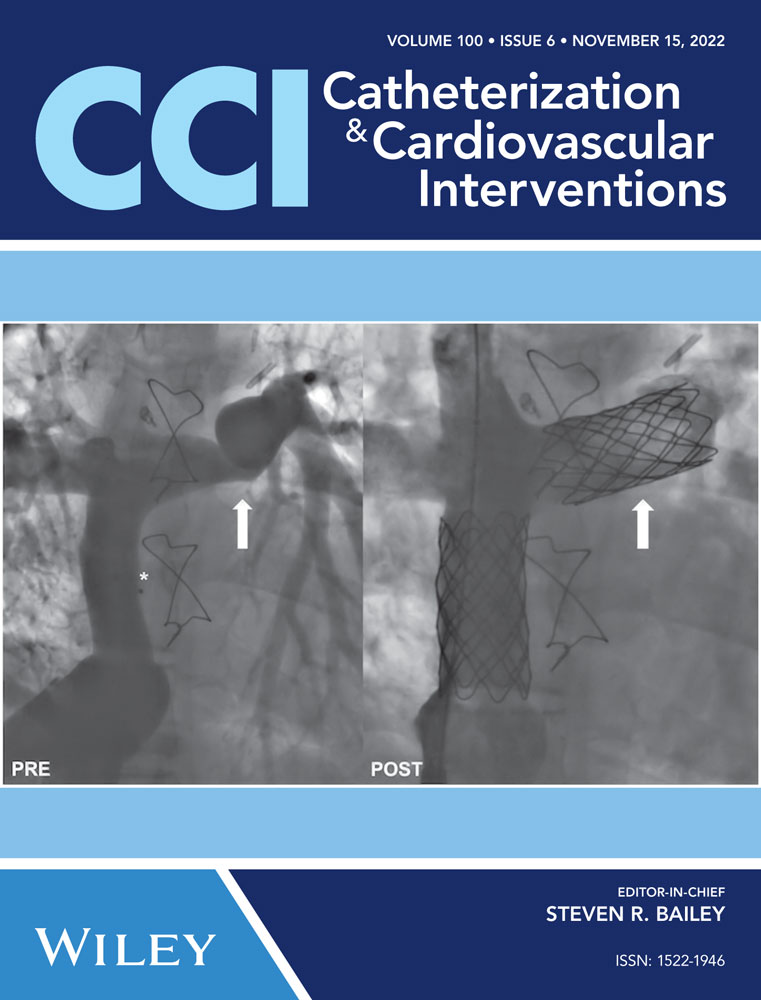Stent expansion of restrictive Fontan conduits to nominal diameter and beyond
Abstract
Background
Mechanical factors may cause bottlenecks in a Fontan circuit. Extracardiac conduits (ECC) are placed at a young age, but the materials do not allow growth. Restriction in ECC dimensions may deteriorate the function of the circuit.
Aims
This study aimed to evaluate the feasibility and safety of stent expansion of an ECC to the nominal dimension at the time of implant and, if possible, beyond nominal.
Methods
Retrospective, single-center observational review of all ECC Fontan patients who received a stent to expand a previously placed surgical conduit.
Results
A total of 44 restrictive conduits were stented over a 14-year study period with a median of 11.8 (interquartile ranges [IQR]: 9.1−13.8) years after ECC placement. Cross-sectional areas were a median of 30% (IQR: 21−42) smaller than the originally placed ECC; there was no gradient in 23/44 patients and in 21/44, a minimal gradient of 1.3 ± 0.5 (range 1−3 mmHg). All conduits could be enlarged with a significant (p < 0.0001) increase in diameter from 13.6 ± 1.8 to 19.2 ± 1.2 mm, corresponding to a median cross-sectional area increase of 171% (IQR: 153−220). In three patients where the conduits were not contracted, expansion of between 127% and 165% was obtained. There were no conduit ruptures and only one minor complication.
Conclusions
ECC in some Fontan patients become smaller than nominal over time, usually without overt symptoms. The dimensions of ECC's can be safely and significantly increased to nominal or even beyond employing stenting. It allows adjustment of ECC dimensions to compensate for somatic growth.
CONFLICT OF INTEREST
The authors declare no conflict of interest.
Open Research
DATA AVAILABILITY STATEMENT
Data are available from the corresponding author




